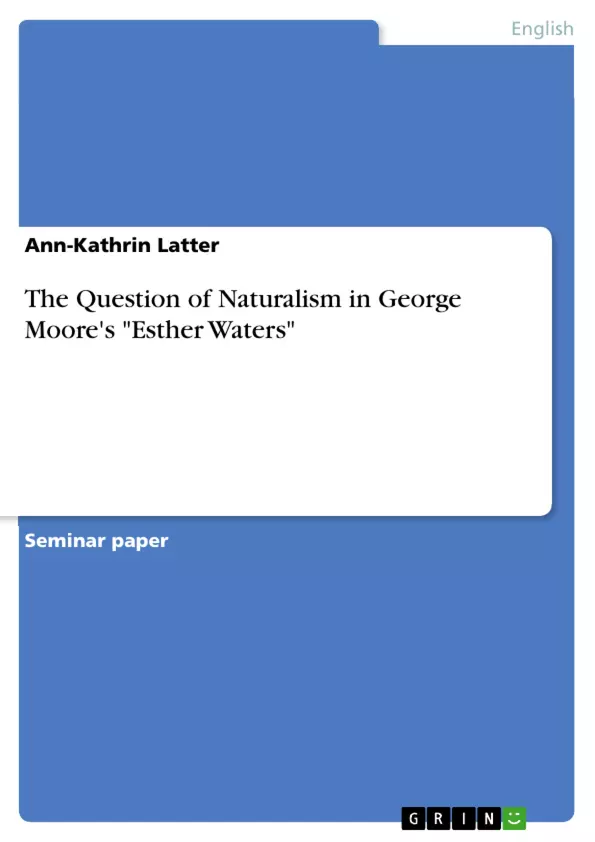Since our very beginnings as a species, the human mind has always loved systems and structures because they help us to gain a clearer view of the deeper meanings behind our experiences. We use indices to chart plants and their uses, official classifications to guide our cohabitation, lists to organize and store data, schedules to control our workflow, and schematic diagrams to proffer detailed and in-depth explanation for certain concepts we want to transmit to other people. In short, there seem to be no practical data that cannot be edited and then published in the form of a directory or site map. And, of course, we have also used these structures to compile and collate information around topics of a more ideational type such as literature or music.
Inhaltsverzeichnis (Table of Contents)
- Introduction.
- Naturalism in theory
- Narrative style and scientific methods.
- Topics and fundamental motifs.
- The philosophy of determinism.
- Naturalist elements in George Moore's Esther Waters.......
- Moore's own theory on human drives and life instincts
- The social and political realities of late 19th century life
- Personalized narrative and internal focalization
- Conclusion
Zielsetzung und Themenschwerpunkte (Objectives and Key Themes)
This term paper examines the question of naturalism in George Moore's Esther Waters, aiming to analyze the novel's distinct features within the broader context of the naturalist literary movement. By exploring the novel's narrative style, philosophical underpinnings, and social critiques, the paper aims to demonstrate how Esther Waters exemplifies key elements of naturalism, while also highlighting its unique characteristics.
- The relationship between narrative style and scientific methods in Naturalism.
- The role of social and political realities in shaping the lives of characters in naturalist novels.
- The influence of determinism on the actions and choices of characters.
- The impact of internal focalization on the reader's understanding of the characters' perspectives and motivations.
- The specific aspects of Naturalism that are both present and absent in Moore's Esther Waters.
Zusammenfassung der Kapitel (Chapter Summaries)
- Introduction: The introduction discusses the significance of categorization in literary studies and highlights the challenges of classifying works within specific movements. It introduces George Moore's Esther Waters and its complex relationship to various literary movements.
- Naturalism in theory: This chapter delves into the theoretical underpinnings of naturalism, examining its core tenets, including the emphasis on scientific methods, the portrayal of social realities, and the philosophy of determinism. It also explores Emile Zola's influence on the movement and his essay "The Experimental Novel".
- Naturalist elements in George Moore's Esther Waters: This chapter analyzes how elements of naturalism are manifested in Moore's Esther Waters. It focuses on the author's unique approach to human drives and life instincts, the novel's depiction of late 19th-century social and political realities, and the use of personalized narrative and internal focalization.
Schlüsselwörter (Keywords)
This work focuses on the literary movement of Naturalism, its key figures such as Émile Zola, and their theoretical frameworks. It explores the influence of naturalism in George Moore's Esther Waters, examining its thematic elements, narrative structure, and social critiques. Key concepts investigated include determinism, scientific methods, narrative style, social realism, and the influence of late 19th-century social and political realities.
- Arbeit zitieren
- Ann-Kathrin Latter (Autor:in), 2018, The Question of Naturalism in George Moore's "Esther Waters", München, GRIN Verlag, https://www.grin.com/document/424801



